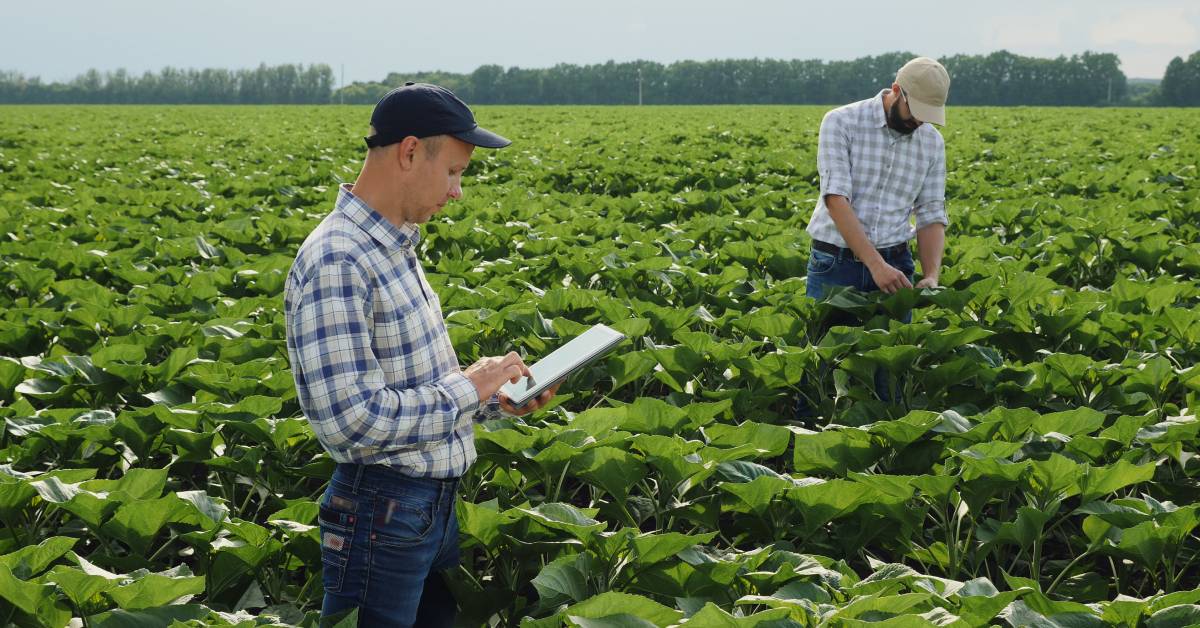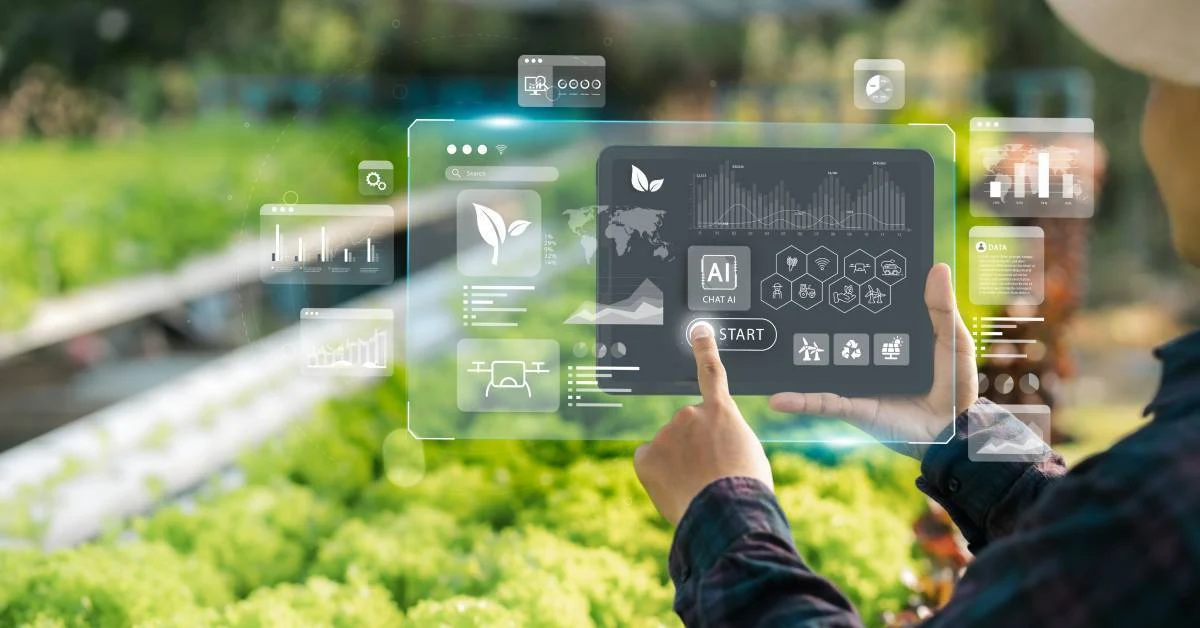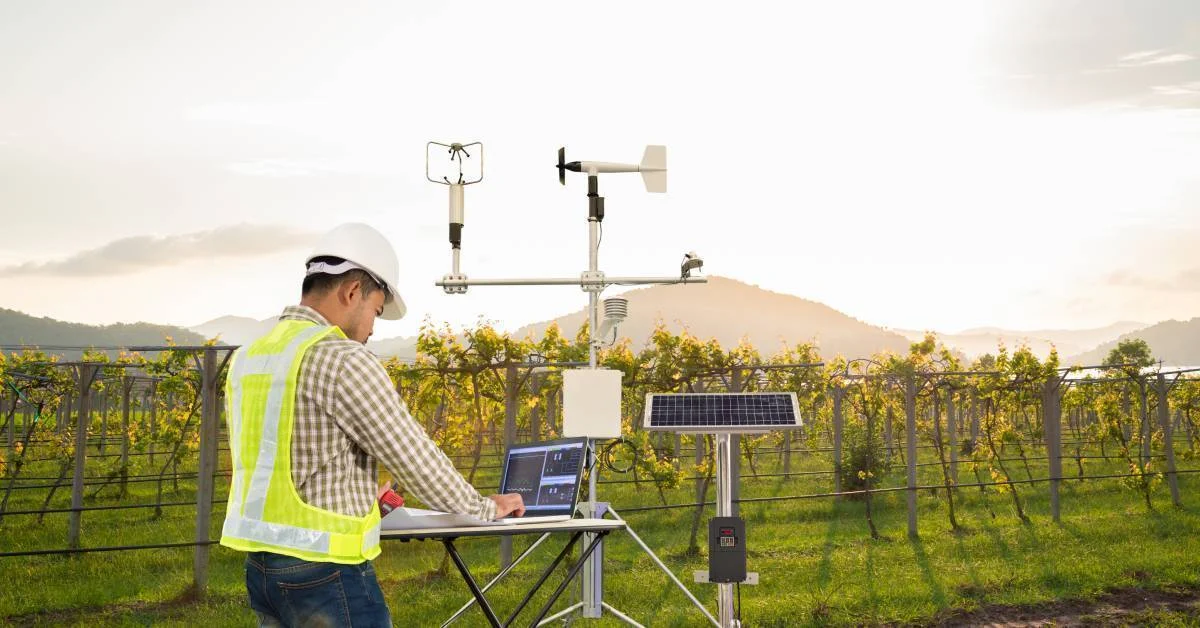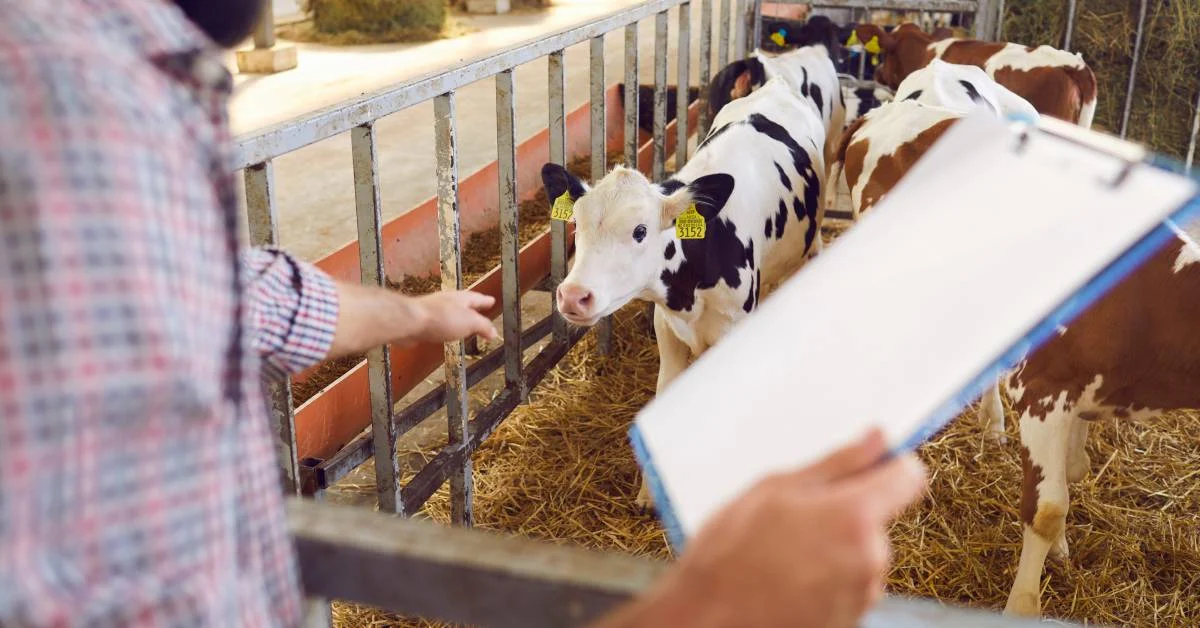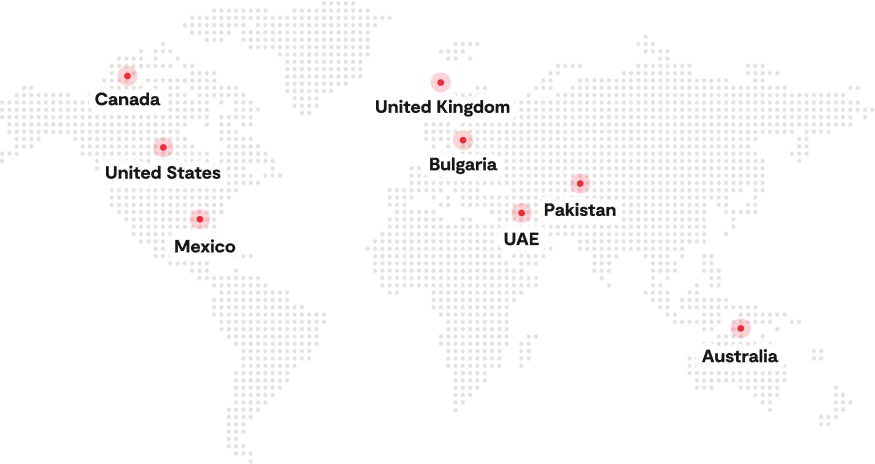Crop management these days isn’t just about what you do to grow crops. It’s about how precisely, how profitably, and how consistently you can do it across every acre, contract, and microclimate. With rising pressure to increase yields and reduce costs, over 80% of farms larger than 5,000 acres are already using or planning to use tools like remote sensing and farm management software.
While tech adoption is rising, execution remains a bottleneck. Most operations know the crop management practices like IPM, VRT, moisture-based harvest, and reduced tillage, yet few have figured out how to execute them at scale in a way that syncs with their equipment, labor, and real-world timing constraints.
This blog explores how top-performing farms are taking these core crop management practices and pushing them further using real-time data to improve performance where it actually counts, that is, in the field, on the books, and across the season.
Crop Management Practices Worth Adopting in 2025
The practices below aren’t just agronomic best practices; they’re operational levers that high-output farms are using to control variability and push margins. All the mentioned crop management practices reflect how modern farms are moving beyond one-size-fits-all strategies toward more adaptive, zone-specific execution.
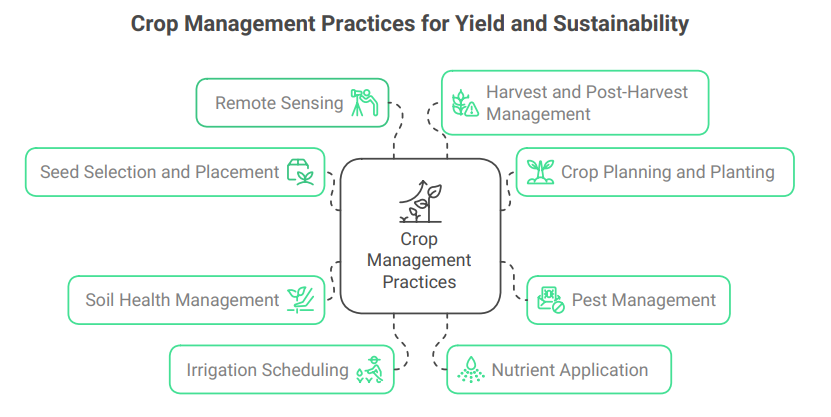
1. Zone-Specific Seed Selection and Variety Placement
Zone-specific seed selection is about matching crop varieties to the unique conditions within each management zone, rather than blanketing the field with a single hybrid or variety. Large farms increasingly rely on multi-year yield maps, soil texture layers, topography, and electrical conductivity (EC) data to divide fields into zones that behave consistently under similar stress and response profiles.
For example, a high-elevation area with lower organic matter and faster drainage may benefit from early-maturing, drought-tolerant hybrids, while bottomland with high fertility and moisture retention could support full-season, high-yield potential varieties. Research by universities like Iowa State has shown that this kind of site-specific placement can significantly improve whole-field yield efficiency and input ROI.
What matters most:
- Choose varieties based on zone yield potential, not field average.
- Use variable-rate seeding treatments to adjust population based on seed responsiveness.
- Validate with on-farm trials per zone, not just blanket strips.
2. Strategic Crop Planning and Timely Planting
Planning your crops well ahead of the season directly impacts yield, profitability, and operational efficiency. With shifting weather patterns and unpredictable rainfall, modern crop management practices must go beyond traditional timing instincts.
Here’s what effective crop planning looks like:
- Use crop management software to plan planting dates based on soil health, past yields, and expected rainfall.
- Factor in gross margin by field to prioritize high-return acres in your plan.
- Link your plan to input availability forecasts, and know when seed, fertilizer, and chemical deliveries are expected.
- Plan around equipment and labor constraints to avoid in-season bottlenecks.
- Split fields into zones or blocks with staggered planting dates to reduce risk and smooth out harvest.
- Consider crop rotation schedules to avoid pest cycles and maintain soil nutrients.
- Factor in labor and machinery availability to avoid delays during peak windows.
- Monitor weather forecasts regularly and adjust your plans to avoid planting during heatwaves or unexpected storms.
Pro Tip:
Instead of planting all fields at once, split your crop plan into smaller blocks with staggered planting dates. This spreads risk and ensures better harvest timing, too.
Why it matters:
Delays in planting, even by a few days, can significantly affect crop development and final crop yield. Good planning helps you stay ahead of weather shocks, manage resources better, and get more consistent results year after year.
3. Integrated Pest Management and Threshold-Based Control
Pest control shouldn’t start with spraying; it should begin with observation. Integrated Pest Management (IPM) is one of the most effective crop management practices to minimize crop losses without over-relying on chemicals.
In 2025, smarter IPM mainly involves these steps:
- Regular crop scouting: Use drones, field sensors, or mobile apps to monitor pest pressure at different growth stages.
- Set economic thresholds: Don’t treat pests until their population crosses a level where the cost of damage outweighs the cost of control.
- Choose the right response:
- Use biological controls and organic pest control methods (beneficial insects, pheromone traps) where possible.
- Rotate chemical classes to reduce resistance.
- Consider mechanical or cultural methods (e.g., row spacing, tillage) before spraying.
Why this matters:
Overuse of pesticides accelerates resistance, harms beneficial insect populations, and degrades long-term soil health. By combining threshold-based control with pest management software, growers can document scouting observations, receive real-time alerts, and time interventions precisely, reducing both chemical costs and ecological impact.
4. Conservation Tillage and Soil Health Management
Think of your soil as a living system, not just dirt. The way you till (or don’t till) has a big contribution to how productive your land will be over time.
Conservation tillage means disturbing the soil as little as possible. Instead of turning everything over with deep plowing, you leave crop residue on the surface and only work the ground where needed. It helps hold moisture, reduce erosion, and feed the microbial life that improves your soil health.
Let’s say you grow soybeans and rotate with corn. Instead of full tillage after harvesting corn, you could:
- Leave corn stalks on the field as cover
- Use a strip-till method just before planting soybeans
- Add a cover crop like rye to improve organic matter
Over time, this approach reduces compaction, improves water retention, and increases yields, without having to increase fertilizer use. In fact, a long-term study in South Dakota found that conservation tillage practices led to a 31.5% reduction in sheet and rill erosion and significantly improved soil organic carbon levels.
5. Rotational Cropping for Soil Fertility and Pest Reduction
Rotational cropping isn’t just tradition; it’s one of the most effective crop management practices for long-term soil health and pest control. By alternating crops, farmers can break pest cycles, improve nutrient balance, and reduce the need for synthetic inputs.
Fields planted year after year with the same row crops, say, corn, deplete soil nutrients, increase disease pressure, and sap your ROI. But a smart rotation like switching between a heavy feeder (corn), a nitrogen-fixing legume (soybean), then a small grain or cover crop breaks that cycle. Here’s how different crop rotations support better soil function and suppress pressure from pests and diseases:
| Rotation | Crop Type | Soil Fertility Impact | Pest/Disease Reduction |
| Corn → Soybeans | Row crops | Balances nitrogen usage and fixation | Breaks the corn rootworm cycle |
| Soybeans → Wheat → Cover Crop | Row + small grains | Adds diversity, builds organic matter via cover crops | Reduces soybean cyst nematode pressure |
| Corn → Alfalfa | Row + forage | Deep roots improve soil structure and nitrogen availability | Suppresses weeds and disrupts insect life cycles |
| Sorghum → Legume Cover Crop | Row crop + cover | Builds organic matter, improves microbial activity | Suppresses pests like corn earworm and fall armyworm |
6. Data-Driven Irrigation Scheduling and Water Use Efficiency
Irrigation isn’t just about turning on the pump; it’s a balancing act between weather, crop needs, and water availability. With increasing pressure to conserve water, precision irrigation scheduling has become a vital crop management practice.
Modern growers are moving away from fixed irrigation calendars. Instead, along with using modern irrigation systems, they’re using real-time data, like soil moisture levels, crop growth stages, and localized weather patterns, to decide when and how much to irrigate. This approach helps reduce water waste, prevent nutrient leaching, and maintain ideal root zone conditions.
To support this shift, many operations are adopting crop management software with built-in irrigation tools. Folio3 Agtech’s crop management solution includes a complete irrigation management module that helps growers:
- Monitor field-specific moisture levels
- Automate irrigation schedules
- Integrate weather forecasts for proactive decision-making
- Track water usage to meet compliance or sustainability goals
7. Precision Nutrient Application Based on Field Variability
When fields don’t respond uniformly, fertilizer shouldn’t either. Precision nutrient application, also known as variable-rate fertilization, is excellent for large-scale operations that want to squeeze every dollar out of their fertilizer spend.
Why It Works
Fields are rarely uniform. Soil texture, organic matter, past inputs, and even subtle topography create zones with dramatically different nutrient needs. Simply spreading fertilizer evenly means you’re over-applying to low-yield areas and underfeeding high-potential zones. In contrast, variable-rate fertilizer (VRF) matches nutrient delivery to each zone’s actual requirement.
How It’s Done
| Step | What to Do |
| Zone Delineation | Use yield history, soil sampling, or EC maps to divide fields into management zones |
| Prescription Mapping | Use farm mapping software tools to generate fertilizer maps that account for measured variability |
| Apply Precisely | Leverage GPS-enabled, VRA-equipped spreaders to apply nutrients at targeted rates |
8. Remote Sensing for Field-Zone Monitoring and Diagnostics
Remote sensing lets you monitor crop health, moisture, and nutrient stress across zones without physically scouting every acre. With drones, satellites, and IoT-connected sensors, you can detect early-stage issues, like chlorosis, canopy gaps, or heat stress, days before they’re visible on the ground.
It’s not just about seeing more, it’s about acting faster. A drop in NDVI in one zone can trigger a field check or nutrient application before it costs you yield.
Why It Matters:
Most yield loss doesn’t happen overnight; it starts in patches. Remote sensing helps you catch those early shifts before they spread. Whether it’s heat stress on a south-facing slope or nutrient deficiency in a low spot, acting on those early signs means fewer blanket applications, better timing, and more consistent performance across the field.
9. Harvest Timing and Post-Harvest Handling Strategies
Harvest timing isn’t about being first out of the gate; it’s about hitting the sweet spot where crop quality, moisture, and yield potential all align. That window can be tight, and missing it by even a few days can lead to grain shrinkage, lodging losses, or reduced sugar content in specialty crops.
Many large growers now use predictive models, including crop phenology algorithms and weather data, to flag optimal harvest windows. A 2024 comprehensive review noted these models help pinpoint the moment when crops reach maximum value and handleability, reducing waste and improving efficiency.
Post-harvest handling then plays its part as soon as the crop leaves the field, and quality starts to drop. Whether grain or fresh produce, maintaining proper dryness, temperature, and cleanliness preserves quality, manages shrinkage, and sustains market value. Grains in particular suffer compounding losses if moisture and temperature aren’t controlled early.
What should growers do:
- Prioritize harvest by readiness, not routine: Use harvest management software that allows maturity tracking, field moisture checks, and short-range weather to decide where to start.
- Stage logistics ahead of time: Match equipment, labor, and transport to harvest windows to avoid bottlenecks.
- Monitor post-harvest conditions from day one: Cool grain within 6–10 hours, ventilate bins, or pre-chill storage for produce.
- Track losses and shrink at each step: Use field-level records to pinpoint where yield or quality is slipping between harvest and sale.
Conclusion
Effective crop production at scale isn’t just about knowing the right practices; it’s about executing them with precision, timing, and context. From seed selection and nutrient application to pest control, irrigation, and harvest, the importance of crop management practices lies in how they adapt to variability across zones, seasons, and markets. What sets top-performing farms apart isn’t access to more tools; it’s how they use data, observations, and local knowledge to fine-tune each step.
As climate variability and input costs continue to reshape the landscape, success will depend on turning familiar practices into smarter systems. The goal isn’t complexity, it’s clarity, consistency, and control. Now is the time to revisit your current systems and ask: Are they just running or actually working for you?
FAQs
What Are Crop Management Practices?
They’re the day-to-day strategies used to grow crops effectively, like irrigation, fertilization, pest control, and harvest planning. The importance of crop management practices lies in improving yield, reducing losses, and managing inputs efficiently across diverse field zones.
Why Are Crop Management Practices Important?
They bring structure and consistency to crop production. At scale, small inefficiencies add up fast, good practices improve profitability, reduce waste, and build long-term soil health. That’s the core importance of management practices in crop production.
How Does Precision Agriculture Help in Crop Management?
It makes crop management more accurate and responsive. Tools like remote sensing and variable-rate application help apply inputs only where needed, maximizing returns and minimizing waste across every zone.
What Is Crop Rotation and Why Is It Important?
Crop rotation involves changing the crop grown in a field seasonally. It breaks pest and disease cycles, improves soil fertility, and reduces dependence on chemical inputs, making it vital for resilient systems.
How Can Technology Improve Crop Management?
Technology helps monitor fields, automate tasks, and improve timing. By integrating tools like sensors and satellite data, growers make faster, better decisions, highlighting the growing importance of crop management practices in modern farming.

